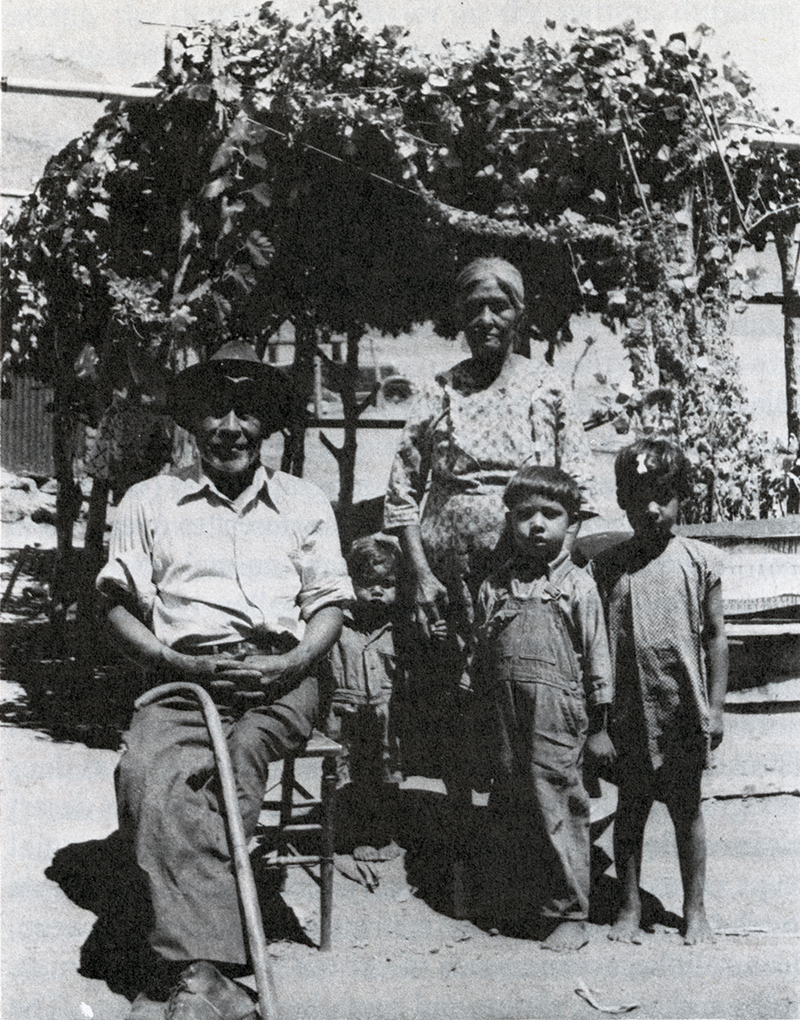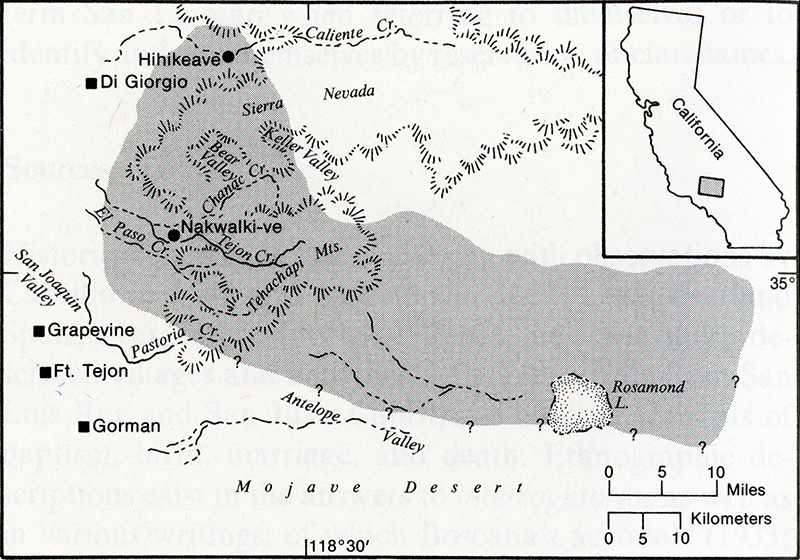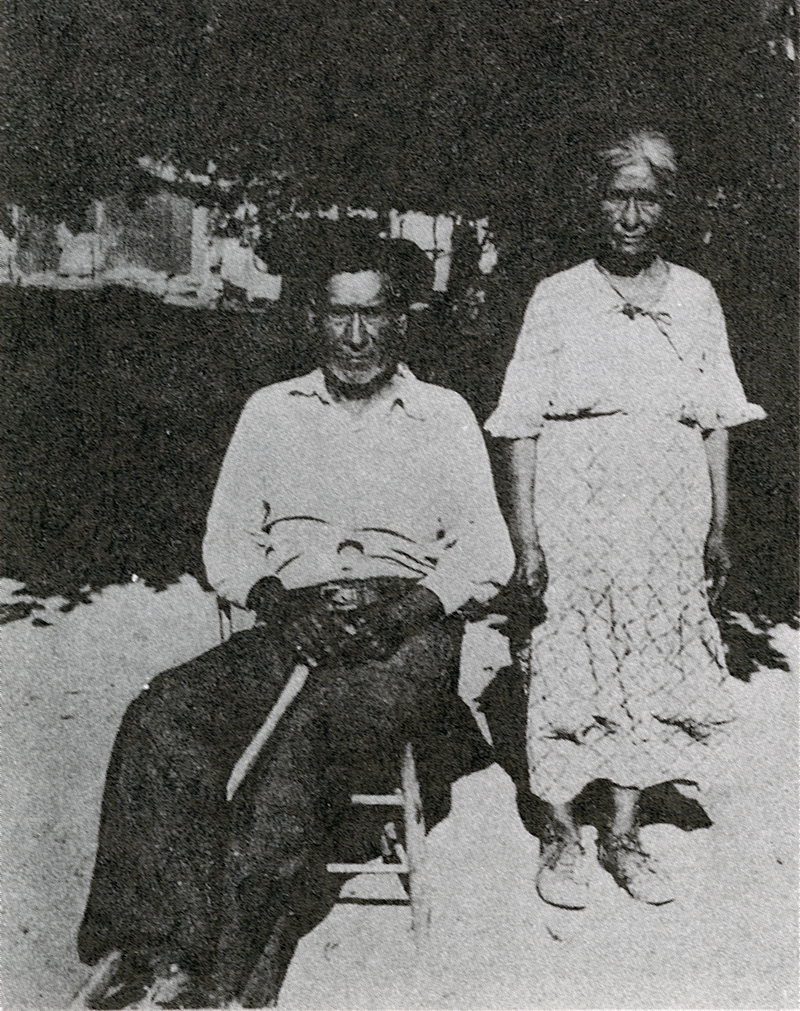|
|

Kitanemuk Mythology
Coyote Kidnaps Mountain Lion's Sons.
At Tejon, 1937.
|
Webmaster's note.
While studying Kawaiisu ethnobotanical traditions from 1936-1940, Maurice L. Zigmond, Ph.D., collected (at least) 72 myths from indigenous people of the Mojave Desert, of which 65 were Kawaiisu and the remainder Kitanemuk (Antelope Valley, southwesterly of the Kawaiisu) and Panamint Shoshone (Death Valley, northeasterly of the Kawaiisu). Zigmond published the stories as "Kawaiisu Mythology: An Oral Tradition of South-Central California" (Ballena Press 1980). Zigmond collected this story in 1937 from two of the last three Kitanemuk speakers, Marcelino Rivera and Isabella Gonzales, who were brother and sister (op. cit.:10) living on the Tejon Ranch. Santa Clarita Valley readers might note that the Tataviam people of the SCV shared traditions with the neighboring Kitanemuk by virtue of intermarriage. For example, Sinforosa Fustero's mother was Kitanemuk (from Tejon) and her father was Tataviam (from Piru). Sinforosa and her son Juan Jose Fustero spoke Kitanemuk (and Spanish). Sinforosa also spoke Tataviam; the Tataviam language died with her in 1915. On the Garcia side, Mary Cooke Garcia's gr-gr-grandmother (all maternal) was Eugenia (Mendez), a Kitanemuk speaker from Tejon. All footnotes and parenthetics are by Zigmond. A version of this story was published by Kroeber in 1907 as "The Panther's Children and Coyote."
Mountain Lion lived a few miles from Tejon Rancheria1 with his wife Jackrabbit, his twin sons, and his mother-in-law Gopher.2 The people in that area didn't like Mountain Lion so they paid Coyote to kidnap his children.3 Coyote was living at Creek Canyon. He came up to Mountain Lion's mother-in-law who was taking care of the two little boys. Their father was out hunting. Their mother was gathering chia. Coyote told the old woman that he was thirsty and wanted a drink of water. He told her to bring the water in a sieve-like basket. She tried, but came back and said that she couldn't get any water in it. He replied that she could if she would plaster the bottom of the basket [apparently with mud]. She went away again, but when she returned, she found that Coyote was gone and had taken the children. When Jackrabbit came home, Gopher told her what had happened. Then Mountain Lion came home and his wife told him that Coyote had stolen the boys. He was so angry that he picked up a burning brand and struck her on the back of the neck. It left a red spot which is still to be seen on jackrabbits. He asked his mother-in-law why she hadn't taken care of the children. He was about to hit her on the head with a rock, but she was sitting near a hole and so she dropped into it and the rock missed her. Mountain Lion set out to look for Coyote and the boys, but Coyote had hidden them at his place in the canyon so they could not be found. As the boys grew bigger, they would go out and play. Coyote had children of his own, but they were not the same as Mountain Lion's sons. Coyote warned the boys not to go far. He was afraid that they might be found. Mountain Lion kept looking all over the mountains and in the plain [the San Joaquin Valley], but he saw no trace of his sons. He had looked for them for twelve years. They were now big enough to go hunting by themselves. They would kill a deer and then tell Coyote. He would go after it. As they grew older, the smaller son said to the larger son, "Don't you notice the difference between our hands and those of Coyote's other children? I don't believe he is our father." But the brother said that they were smaller than the other children and that was what made the difference. Mountain Lion would go to the top of rocks to look around for his children. He couldn't eat and would cry a lot. He sang a song [but the narrators couldn't remember it].
Once the children went far off and killed a deer. The younger son kept thinking about Coyote not being their father. He said, "We can't be related to him. Look how big our hands are." They came across Mountain Lion's tracks. "Let's go up this way," the smaller one said. "We haven't been this way." He measured his hands against the tracks and found that they fitted exactly. They followed the tracks and heard someone talking. It was Mountain Lion talking to himself. They listened and heard him telling how Coyote had stolen his sons. Mountain Lion said that when he was young he could always see an arc shining around him "like the sun."4 As he grew older he didn't see it any more. The smaller son had had the same experience. He said, "Let's go up and see him." The other boy didn't want to because he remembered that Coyote had said that there was a man around who would try to steal them and kill them. But the other brother said, "Let's go up anyway." And so they did. They talked to Mountain Lion and he knew they were his children. The smaller one said, "Didn't I tell you that Coyote isn't our father? This one is our father." Mountain Lion kept some pinyons, juniper berries, and chia in his belt. He gave the boys some. After he had fed them, he said, "Coyote will smell the food and know what you ate. He will ask about it. You tell him that you were on the tivaŋ mountain where there are many pinyon trees and juniper bushes.5 When they got home, Coyote asked them right away about the smell of pinyon and juniper. They told him that they had been on the tivaŋ mountain where there were lots of them. They also told him about the deer they had killed. They wanted him to go after it. Coyote brought in the deer, but told them not to go so far away again. He said it was too far for him to carry the deer. The next day the boys went hunting nearby and saw Mountain Lion again. They killed another deer, but Mountain Lion kept them until it would be too late for Coyote to come after it that night. It was lying under a mountain oak.6 (When the boys were young, Mountain Lion had given them necklaces of gold and silver, but Coyote had taken them off and put them on his own children. In place of them, he had given Mountain Lion's sons necklaces of cane, oakwood, and rosebush wood.7) When the boys got home, they told Coyote that they had killed a deer. It was too late to go after it that night. "We'll show you where it is in the morning," they said. "All right," said Coyote. It was the habit of the boys to leave the deer carcass whole. Then Coyote would come and eat the guts and the rest of the "insides," and bring the carcass home. In the morning the three started off together. Then the boys told Coyote to go ahead and they would catch up with him. They told him where the deer was. They took another way and arrived ahead of him. Coyote came to the deer under the oak tree. He noticed that the tree had a broken limb. He was suspicious and hesitated to go nearer. The boys assured him that it was all right. They said that they had played there and had broken the limb. Coyote came close but was reluctant to go inside the carcass. The boys urged him on. He cut a hole in the stomach and went in. He ate the heart, the liver, and the other internal organs. The boys had told Mountain Lion that when Coyote was getting full and feeling good, he would wag his tail. He saw Coyote's tail wag. He quickly closed up the opening where Coyote had entered. There was a small hole in the deer's neck where the blood had been let out when it had been killed. Coyote looked out of the hole and saw Mountain Lion. He begged Mountain Lion not to kill him. "I worked hard and raised your sons," he said, "and now that they are grown up, you can have them." But Mountain Lion said, "You made me worry and suffer all these years, and so now I will have to kill you." Mountain Lion killed him, and then went on to Coyote's house and killed his wife and children. Then Mountain Lion and his sons went to live on tivaŋ where there is lots of food.
1. This tale was told in the midst of the Tejon Rancheria, which in aboriginal days must have been a Kitanemuk center. The rancheria was absorbed in a great cattle ranch and the two narrators (brother and sister, I think) were the only Kitanemuk remaining. 2. Though the sons are described as "twins," one was apparently bigger than the other. 3. This reason for the kidnapping is not to be found in any of the Kawaiisu versions. 4. The presence of the "arc" is not explained. 5. The name of the mountain is derived from tiva "pinyon." The narrators explained that the name is also given to "five springs" which are located near the mountain. 6. This oak tree was described as "not tall — with its branches spread out." 7. The gold and silver necklaces must have been a modern touch. The necklaces are usually described as made of beads — which also are valued as money. Coyote's necklaces are said to be made of sections of cane (Phragmites australis) which are hollow and could conveniently be used as "beads."
|
Unratified Treaty 1851
Woodcut 1853
Ex-Reservation Church, Late 1800s
Indian Home & Orchard, Late 1800s
Indian Man, Woman, Child, Dog, Oak Tree 1888
Purpose of Fort Tejon & San Sebastian Indian Reservation (Wilke-Lawton 1976)
Kitanemuk Mythology: Coyote Kidnaps Mountain Lion's Sons
PB64811
PB65763
|
The site owner makes no assertions as to ownership of any original copyrights to digitized images. However, these images are intended for Personal or Research use only. Any other kind of use, including but not limited to commercial or scholarly publication in any medium or format, public exhibition, or use online or in a web site, may be subject to additional restrictions including but not limited to the copyrights held by parties other than the site owner. USERS ARE SOLELY RESPONSIBLE for determining the existence of such rights and for obtaining any permissions and/or paying associated fees necessary for the proposed use.











